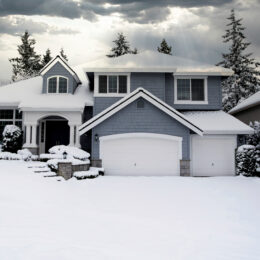
Electric bills vary with the seasons, driven by weather and consumer use patterns.
Weather matters when talking about electricity and your bill. When it’s cool outdoors, family members generally want the house warm. When it’s warm outside, air conditioners make living areas pleasant.
How much weather affects your bill depends upon many factors, including your home’s original construction materials, insulation and air leaks. Personal comfort plays a role, too, as does the difference between the thermostat setting inside and the temperature outdoors.
When a house stays at 68 F but the outdoor temperature varies from minus 20 F in winter to more than 100 F on a muggy summer’s day, demand for heating and cooling can be significant. Cooled air leaving a home essentially wastes money spent to cool it. The same is true for air a homeowner has paid to warm.
To save money, set your thermostat five degrees closer (higher in summer, lower in winter) to the outdoor temperature. This simple change could result in a savings of 90 watts per hour of electricity. That’s about 197 kilowatt-hours (kWh) in three months. At a statewide average of 12 cents per kWh, this adjustment keeps an extra $23.64 in your pocket.
Contact your local co-op’s energy efficiency representative and ask for an energy audit. These specialists can save you hundreds of dollars by uncovering energy waste and making recommendations to improve energy efficiency.
In the meantime, adjust the thermostat. Keep blinds and drapes on the sunny side of your home closed in summer and open in winter. Find mysteriously “hot” or “cold” spots in the house? Solve them by installing gasket seals around outlets and weather stripping along doors and windows, replacing old windows, and upgrading insulation. When practical, adjust landscaping to provide shade for your property in summer and sunlight in winter.
Weather doesn’t have to play havoc with electricity bills. There are a variety of tools, appliances and resources available to solve all sorts of energy challenges. Some, such as new windows or a roof, require significant financing. But there are a lot of options that are inexpensive and simple to do and that you can benefit from.



